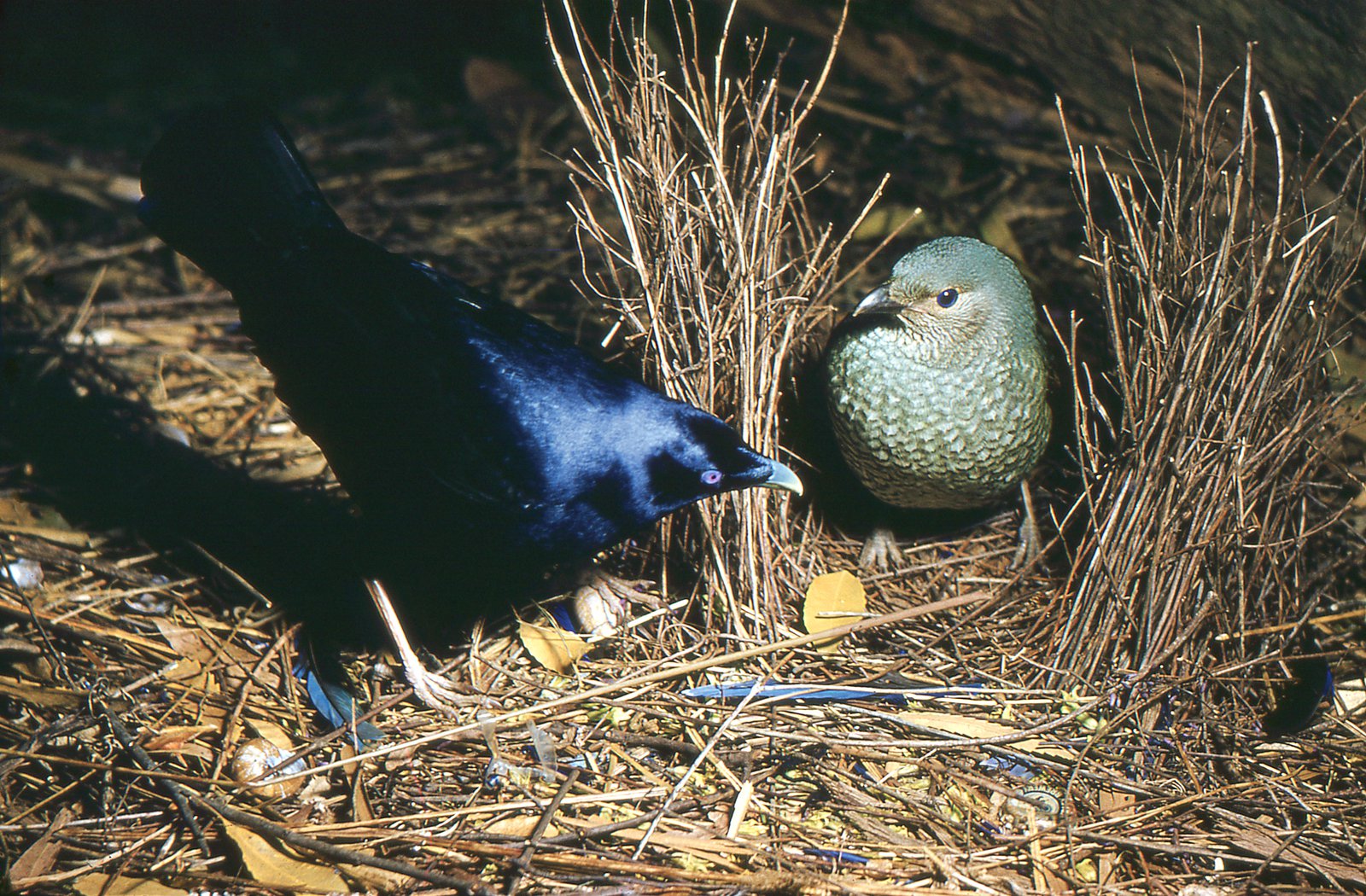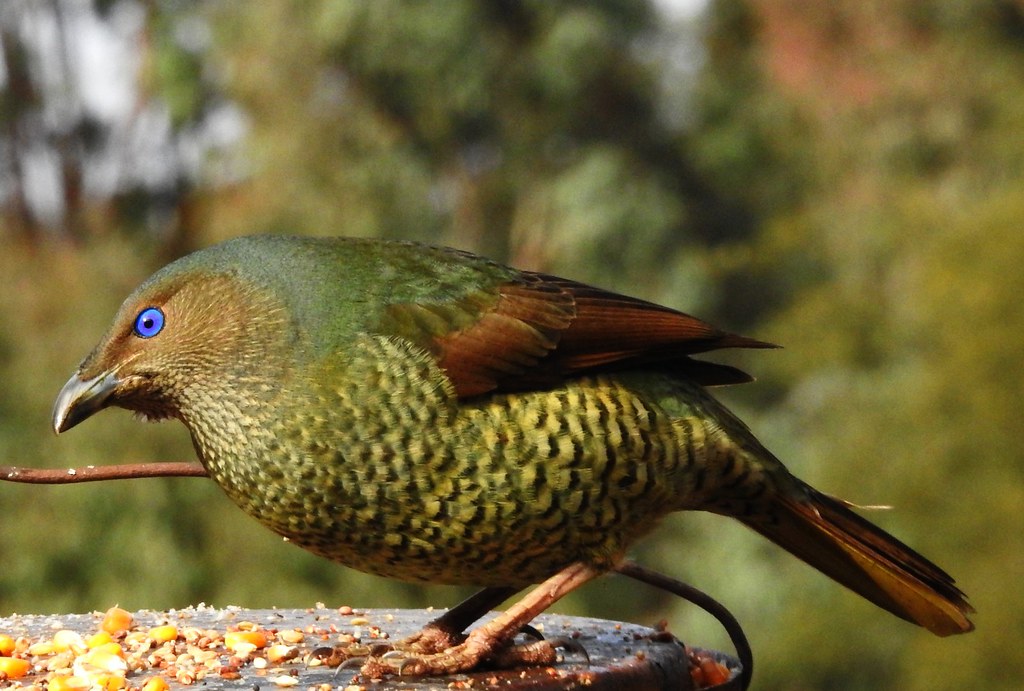The Satin Bowerbird (Ptilonorhynchus violaceus) is the most common species of bowerbird in the Blue Mountains, inhabiting an area from Penrith to Jenolan Caves. If you’re lucky enough to spot one, here are some interesting facts about the fascinating Satin Bowerbird (Ptilonorhynchus violaceus).
How do they build their bowers?
The bowers of satin bowerbirds are made from a range of natural and found materials, including sticks, stones, bones, shells, fruits and flowers. These materials are held together with mud or plant resin and decorated with more sticks or brightly coloured objects. The exact structure of each bower is unique to its creator and will often take months to complete. The style of each structure is also affected by social rank.
Dominant males have larger, more complex structures than younger males in order to attract females for mating. Females don’t build their own bowers, preferring instead to mate with more dominant (and better-resourced) males. Females do help maintain their mate’s bower once they settle down though!
What’s going on inside their brain?
A study by Australian National University and Trinity College, Dublin researchers has revealed that a male bird’s bower building skills depend on his testosterone levels. The research team found that when they manipulated testosterone levels in male satin bowerbirds, they were able to change how well males decorated their nests.
As Dr Richard Davies explains: By giving extra testosterone to males that had relatively low levels, we made them behave as if they had higher-than-normal testosterone and so increased their mating success. This effect was particularly marked among males that initially built poor quality bowers—they significantly improved after receiving an additional dose of testosterone. We think it’s likely other animals engage in similar behaviour and deliberately manipulate their hormone levels in order to control how they appear to others. However, we don’t know for sure whether hormonal changes are perceived consciously or unconsciously, nor do we know how widespread such effects might be within different species.
Are they monogamous?
While it’s not exactly known if they mate for life, bowerbirds tend to be monogamous. In one study, nearly 70% of satin bowerbirds returned to their original partner for at least two breeding seasons in a row. Plus, most have only one mate at a time. But that doesn’t mean they won’t change their mind in between…
How did they get their name?
The satin bowerbird was originally named because of its glossy, satiny plumage. This bird gets its name from Ptilonorhynchus meaning feather ridge and violaceus meaning violet-coloured. They are found in only a few areas of eastern Australia, in particular, The Blue Mountains. Their preferred habitat is open eucalypt forests where they can build their ornate bowers.



